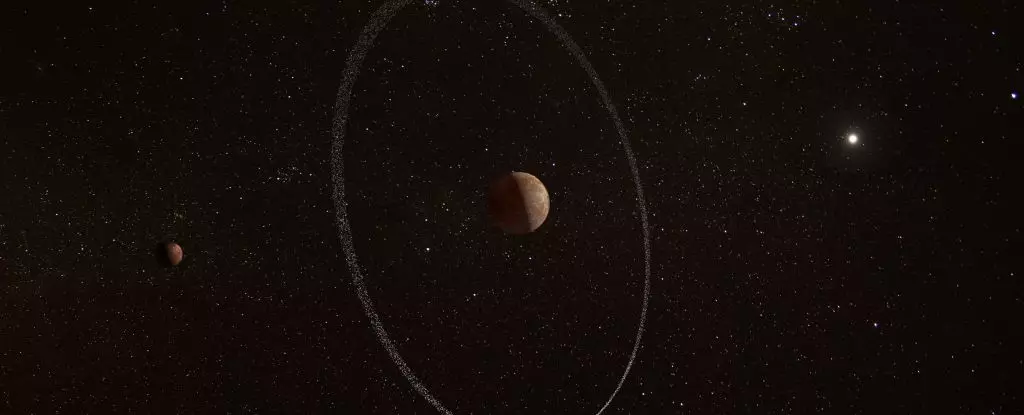The vast and diverse moons of the Solar System offer a wide range of intriguing features, from hot moons to cold moons, liquid moons to dusty moons. However, despite the variety, one peculiar absence stands out – the lack of ringed moons. Even though planets like Saturn and Jupiter boast spectacular rings, not a single moon in the Solar System has been observed to have this feature.
Astrophysicist Mario Sucerquia and his team at the Adolfo Ibáñez University were puzzled by this anomaly and set out to investigate it further. They wondered why moons in our Solar System lacked rings when giant planets, asteroids, and even some dwarf planets sported these ring structures. This led them to explore the potential dynamical reasons that could be preventing ring formation or long-term stability around moons.
To unravel this mystery, Sucerquia and his colleagues turned to N-body simulations, creating models of cosmic systems involving moons in the Solar System. They considered factors such as gravitational interactions among moons, their host planets, and other celestial bodies that could affect ring formation. Surprisingly, the simulations revealed that ring structures around moons could be stable, contrary to the researchers’ initial expectations.
The absence of visible ringed moons in the Solar System does not necessarily imply that they never existed. Evidence from simulations suggests that features like debris orbits around Saturn’s moon Rhea and the equatorial ridge of Saturn’s moon Iapetus could be remnants of former ring systems. Radiation pressure, magnetic fields, internal heating, and other cosmic forces may have contributed to the disappearance of these rings over time.
Although the lack of observable moon rings in the Solar System may be attributed to timing and environmental factors, the researchers remain hopeful. Further simulations incorporating additional variables such as radiation pressure and magnetic fields could shed more light on this enigma. By studying moons more closely for past evidence of rings, like Iapetus’ ridge, researchers can deepen their understanding of moon formation and evolution.
As Sucerquia and his team continue their quest to uncover the mystery of missing moon rings, they are also expanding their search to alien worlds orbiting distant stars. Their curiosity about the potential existence of ringed moons in other planetary systems raises intriguing questions about the impact of such phenomena on the culture and mythology of extraterrestrial civilizations. The exploration of ringed moons not only expands our knowledge of the cosmos but also inspires contemplation about the interconnectedness of astronomical phenomena and human imagination.



Leave a Reply